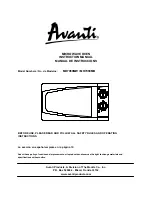
17
CLEANING
• Make sure that the appliance is
unplugged.
• Clean the beaters
(b/c)
, kneaders
(d/e)
, blender shaft
(l/m)
, mini-
chopper
(n)
and blender bowl
(o)
immediately after use to avoid
remains of mixtures with egg or oil
sticking or drying on them.
• You can wash the beaters
(b/c)
,
kneaders
(d/e)
, the plastic and
metal blender shaft
(l/m)
, bowl,
blade, mini chopper stabilising
base
(n1/n2/q)
and the bowl,
blade, sealing lid and stabilising
base of the blender
(o1/o2/o3/q)
in water with a sponge and some
washing-up liquid.
- The beaters
(b/c)
, kneaders
(d/e)
, bowl, blade and mini
chopper stabilising base
(n1/n2/q)
and the bowl, blade,
sealing lid and stabilising base of
the blender bowl
(o1/o2/o3/q)
can be placed in the dishwasher.
The blender shaft
(l/m)
can be
washed in the top basket of the
dishwasher with the blades
facing upwards.
• Blades are very sharp, ensure care
is taken when placing and
removing the blades from the
dishwasher.
• Clean the base
(g)
, the reducer of
the mini-chopper
(n3)
, the reducer
of the blender
(o4)
, the appliance
body
(a)
only with a wet sponge
and dry thoroughly.
• Never wash the motor unit in the
dishwasher.
• Do not use scouring pads or
objects containing metal parts.
• Never immerse the motor unit in
water. Wipe with a dry or slightly
damp cloth.
Attention: The blender shafts (l or
m), the blade of the mini-chopper
(n2) and the blade of the blender
(o2) are very sharp. Care should be
taken when cleaning them.
END-OF-LIFE ELECTRIC OR ELECTRONIC PRODUCTS
Think of the environment!
Your appliance contains valuable materials which can be
recovered or recycled.
Take it to a local civic waste collection point.
Summary of Contents for HM6151
Page 1: ...EN...
Page 2: ...b l h a i j g k m d c e f f f f a1 a2...
Page 3: ...o4 n3 o n n2 o3 o2 n1 p o1 Q Q R R...
Page 4: ...1 2 3 4 5 6 1 2...
Page 5: ...7 8 9 10 3 2 1 Q 1 2 3 4 Q Q Q...
Page 14: ...123...
Page 15: ...124...
Page 16: ...125...
Page 17: ...126...
Page 18: ...Ref 2551109 04 P 10 17 EN...




































